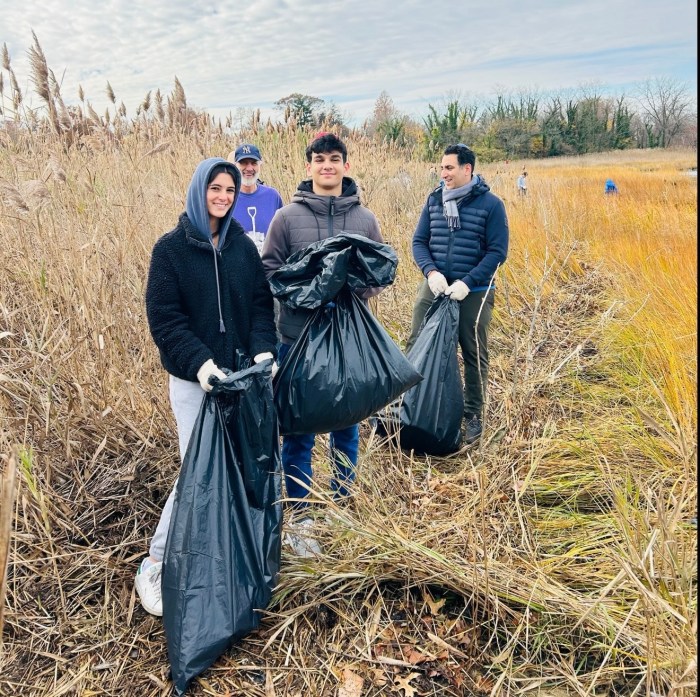
During Earth Day this Saturday, April 22, think about your impact on the planet—and man-made pollutants on your health. Toxic chemicals are with us every day. Being bombarded by these hazardous substances shouldn’t be a way of life—and positive interventions can be used to lessen our exposure, beginning by knowing where they lurk.
Two classes of chemicals are pervasive in modern society—perfluorinated chemical compounds (PFCs) and plasticizer chemicals (BPA and phthalates). Fluoride is a very familiar chemical, and most dentists even recommend using fluoride rinses and toothpaste containing it to prevent cavities. For Americans, the most common source of fluoride exposure is tap water, but food can also come in contact with fluoride.
A surprising source is fast food wrappers and containers. Perfluorinated chemicals are used to give wrapper papers a slick surface that are oil and grease resistant. These chemicals are prevalent in dessert and bread wrappers, pizza box liners, French fry containers and white cardboard containers with a shiny inside coating. Fluorinated chemicals migrate from the packaging into the food we eat. The amount transfered to the food depends on the food’s temperature, as well as the length of time the food comes in contact with the wrapper. Hot foods tend to release more of these chemicals than do cold ones. At least 27 U.S. fast-food chains have tested positive for PFCs. Consumers can contact a company’s main headquarters to find out if its food wrappers contain them.
Another chemical in the fluoride family is perfluorooctanoic acid (PFOA), which is used to make nonstick cookware. Cooking in this type of pot or pan can cause the acid to transfer to your food. Microwave popcorn bags, candy wrappers and other food wrappers contain this chemical. Plasticizers are in the plastic wrappings for meat, chicken and other foods with plastic wrappers. These contain phthalates, considered to be endocrine disruptors. Another powerful hormone disruptor is bisphenol A (BPA), a chemical found in the lining of almost all cans.
All of these chemicals are associated with a wide array of health problems, including cancer, heart disease, immune and thyroid dysfunction, infertility, low birth weight and developmental problems. The Environ-mental Working Group is trying to stop fast food companies from using these chemicals. Consumers can also make their voices heard by telling food companies and the FDA that they demand safe food wrappings and containers.
In addition to wrappers and containers, fumigants and pesticides can turn food into another source of fluoride. The Environmental Protection Agency (EPA) allows direct application of sulfuryl fluoride, a commonly used fumigant, on certain food crops. Sulfuryl fluoride breaks down to fluoride after application. According to the EPA, foods most commonly fumigated include cocoa powder (100 percent), dried beans (100 percent), walnuts (99 percent) and dried fruits (69 percent). While only about 3 percent of rice is fumigated, brown rice tends to be the highest at 12.5 parts per million, which compared to 8.4 parts per million for cocoa powder. Direct application is also permitted on coffee. A pesticide called cryolite, commonly used on grapes grown in the U.S., contains sodium, aluminum and fluoride, so it is advisable to avoid consuming non-organic grape juice.
Food processing companies also use sulfuryl fluoride for preventing pests in closed storage structures. The Fluoride Action Network’s Fluoridealert.org notes that the EPA does not require food processors to remove food prior to fumigation of a food storage area. As a result, any food being stored in a facility during fumigation will be contaminated with fluoride.
High levels of sulfuryl fluoride are known to cause serious health issues, including crippling skeletal fluorosis, according to the late Albert Burgstahler, PhD, professor emeritus of chemistry at the University of Kansas and one of the world’s best-known authors on the dangers of fluoridation, whose efforts aimed to end fluoridation worldwide. According to the Fluoride Action Network, scientists from the EPA’s National Health and Environmental Effects Research Laboratory have classified fluoride as a “chemical having substantial evidence of developmental neurotoxicity.” A coalition of environmental, medical and health groups along with the Fluoride Action Network is urging the EPA to end fluoridation of the public water supply. This coalition has presented the EPA with a petition featuring some 2,500 pages of scientific documentation of fluoride’s ill effects on human health.
We can take significant measures to help protect ourselves from these chemicals: Filter your tap water. Avoid fast food and focus on locally grown foods, ideally organic. Avoid using a microwave, particularly food that has a plastic wrapper. By cooking from scratch, you will limit your exposure to these harmful chemicals. Store food in glass rather than plastic. Use glass baby bottles.
In addition to food, numerous household, clothing and personal care items contain perfluorinated chemicals. Perfluorooctanesulfonic acid is a key ingredient in stain-resistant fabrics, including carpets and upholstery. Glossy paints, varnishes and sealants contain PFCs as well. Many household cleaning products also contain phthalates, but you can avoid exposure to them by using natural cleansers. Avoid using dry sheet fabric softeners, which contain a tremendous amount of synthetic chemicals and fragrances, many of which can cause damage to your brain health. Be wary of water-repellent clothing, as PFCs are used in the manufacturing of these fabrics. PFCs can also be found in personal-care products, including easy glide dental floss and cosmetics. Feminine hygiene products made of real cotton, which are often available in health-food stores, are a natural solution. Replace vinyl shower curtains. Buy fragrance-free products. Choose an eco-friendly floor mat material for toddlers. Purchase BPA-free toys, pacifiers and teething rings for babies. Some phthalates are di-n-butyl phthalate, diethyl phthalate, benzyl butyl phthalate and dimethyl phthalate. Those looking to start a family should avoid 2-butoxyethanol and methoxydiglycol, two toxic glycol ethers that can compromise fertility and can cause harm to the fetus.
When shopping, read labels. If you can’t pronounce it—don’t buy it. Try to select organic products. They are the least toxic for the Earth and all of its inhabitants. That’s a wrap.
Gary Feldman is a nutrition educator and lecturer, instructor in the Port Washington Union Free School District Continuing Education program, was an innovator in the nutritional supplement retail industry and is a health writer in Great Neck. Email him at garyteach1@gmail.com.
































